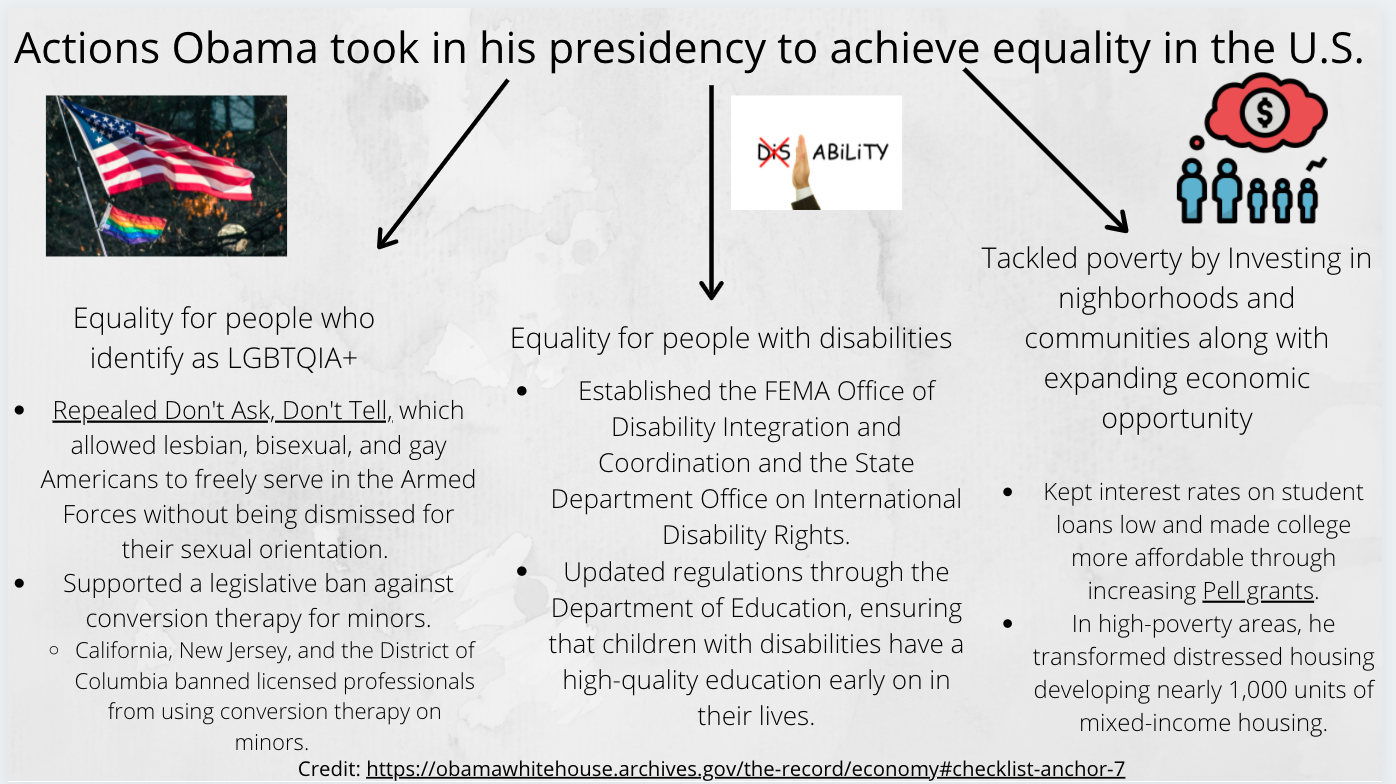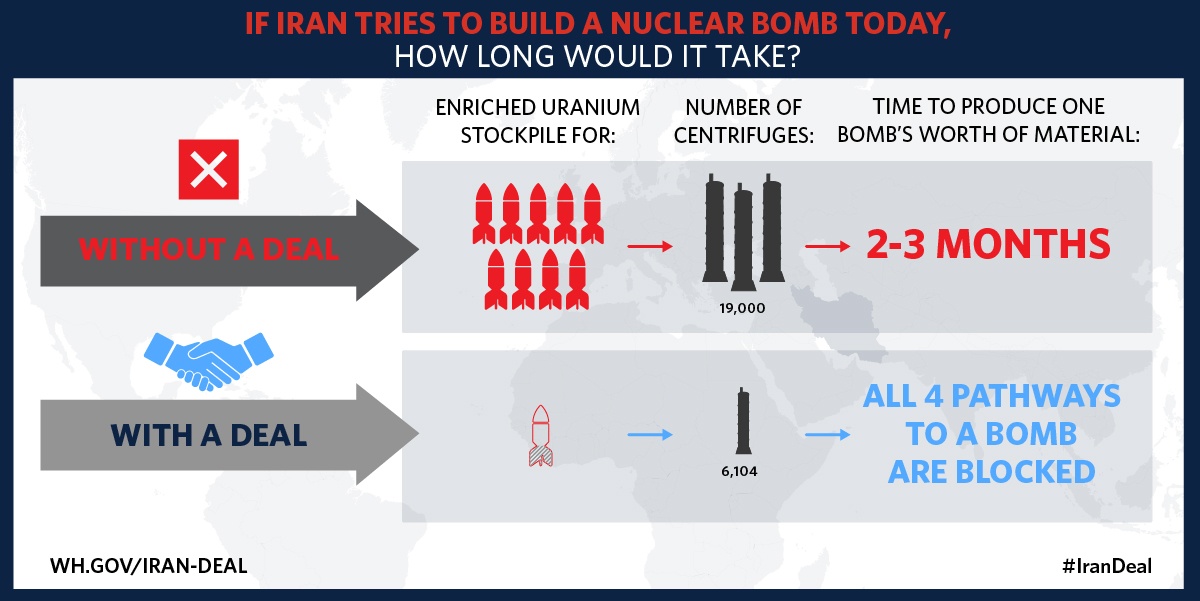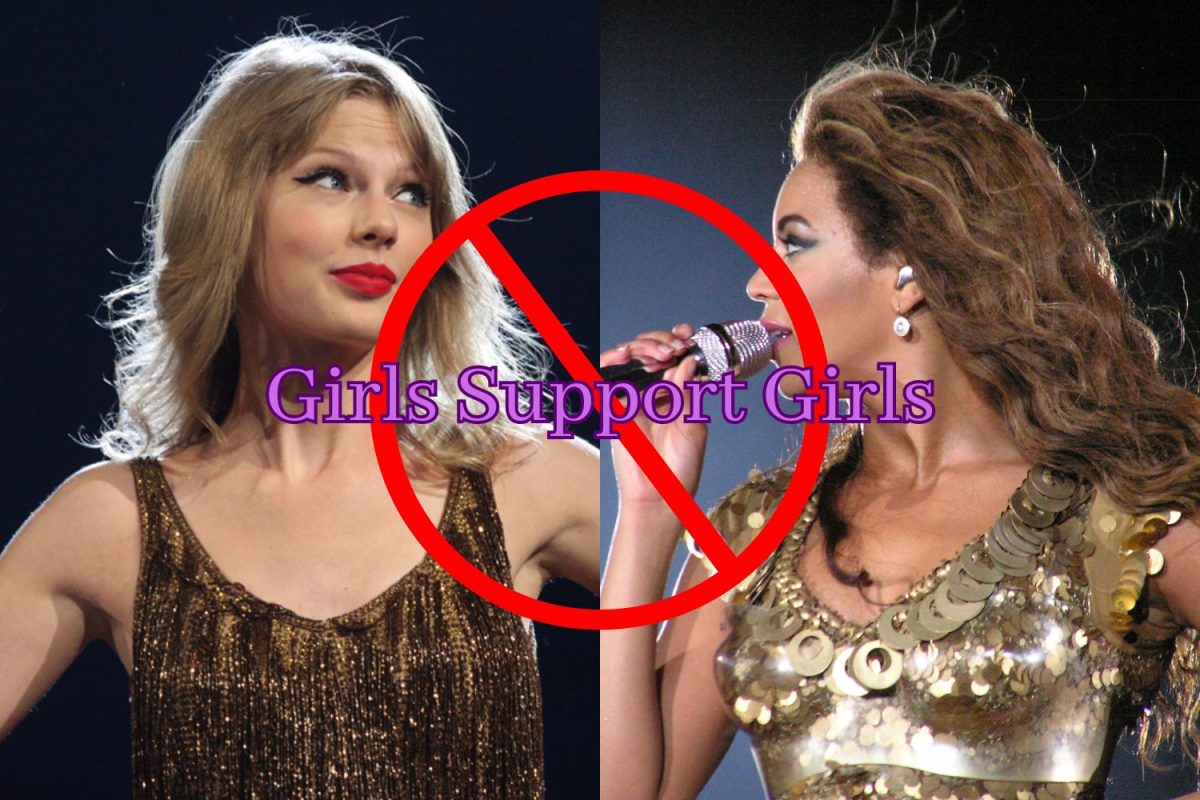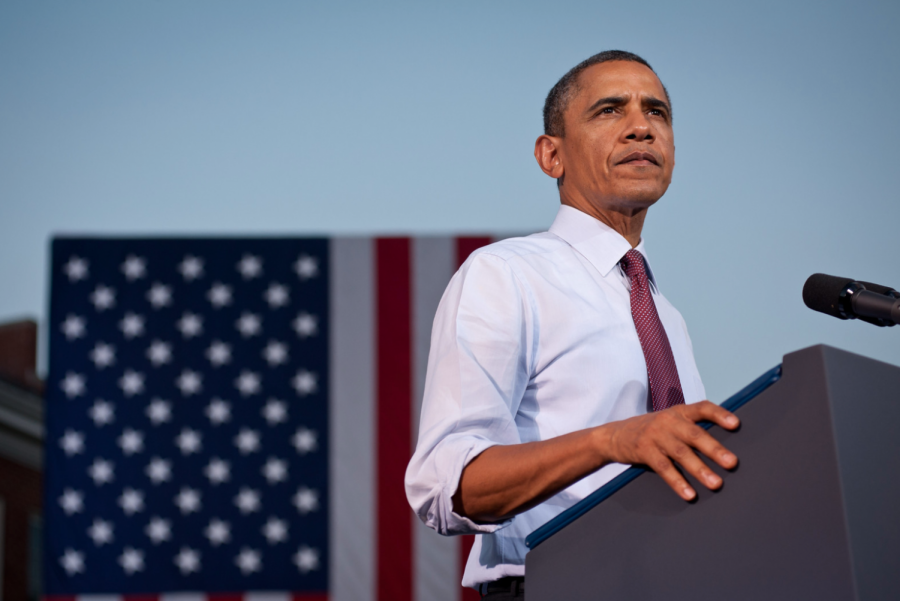Dear future presidents of the U.S.,
For the U.S., 2020 was a year of political polarization, turmoil and continuous social unrest. Ranging from the various protests surrounding racial violence to institutional injustice, we are witnesses to a rise in political and civil instability.
Jan. 20, 2009, Obama was inaugurated as the 44th and first Black president in U.S. history.
Although some would disagree, when Obama was president at a time when the U.S. was a more united nation with less obvious turmoil, unlike what has been observed in recent years.
While dissecting Obama’s presidency, with all its ups and downs, I’ve gathered four main lessons from which future presidents could draw.
Lesson 1: Promotion of ethnic diversity and inclusion
According to the Pew Research Center, former Republican party nominee and Senator John McCain won 55% of the white vote compared to Obama’s 43% in the 2008 presidential election. However, Obama led with minority voters, including 95% of Black voters, 67% of Latino voters and 62% of Asian voters.
Obama successfully managed to appeal to a diverse audience rather than just white voters. Through his inclusive language and actions, he was able to attract a wide audience of voters.
August 2011, Obama signed an executive order announcing a government-wide initiative to promote inclusion and diversity in the federal workforce, per the General Services Administration’s website. By implementing this plan, he fostered a sense of unity among the different ethnicities that make up the U.S.’ diverse population. This also allowed for representation of different ethnicities and allowed those workplaces to think more broadly with different perspectives.
During his speech at the Democratic National Convention in Illinois in 2004, Obama said, “There is not a Black America and a White America and Latino America and Asian America, there is the United States of America.”
Similarly, in his speech at the 2016 Democratic National Convention, Obama said he sees “Black, White, Latino, Asian, Native American, young, old, gay, straight, men, women, folks with disabilities all pledging allegiance under the same proud flag.”
Unity is a consistent theme emphasized in his speeches. By meticulously presenting this topic of inclusion, Obama demonstrated his commitment to unifying the nation, a goal that all presidents should strive towards.

updated the department of education’s regulations, and transformed poor housing to assure equality for all U.S. citizens. (Vittoria Di Meo)
Lesson 2: Taking action to improve the accessibility of healthcare and wellbeing of Americans
Obama signed the Affordable Care Act March 23, 2010, through which he created a healthcare plan commonly known as Obamacare. This act provided accessible healthcare to more than 16 million Americans who were able to obtain health insurance coverage, per the Office of the Assistant Secretary for Planning and Evaluation.
Furthermore, Obama succeeded in granting aid to Americans and offering more affordable healthcare for those who previously lacked access. The insurance program Medicare, which assists the nation’s elderly, saved over $26.8 billion on prescription drugs under Obamacare in 2017 alone.
However, Obamacare came with its drawbacks; it raised the marginal tax rate for some Americans and decreased coverage in some states that had refused to expand Medicare programs.
Some health providers weren’t covered by insurers under the Affordable Care Act, making it difficult for some Americans to find insurance, partly due to the fewer insurers offering plans. This was due to concerns over whether insurance companies could make money through providing plans.
Nevertheless, the quality of the insurance rose, along with the number of overall people that were previously uninsured – 16.4 million.
Lesson 3: Skillful handling of diplomatic relations regarding the Iran Nuclear Deal
According to ABC News, Obama announced a withdrawal of U.S. troops from Iraq Aug. 31, 2010, of which 75% of Americans approved. According to the Pacific Council of International Policy, the U.S. supported the Iraqi government. The remaining troops were instructed to conduct counterterrorism missions, hoping to end the war in Iraq.
Most notably, Obama’s management of foreign policy can be recognized by his handling of the Iran Nuclear Deal.
The U.S., the United Kingdom, Russia, France, China and Germany all shared a common goal of hindering the progression of Iran’s nuclear program. In so doing, if Tehran wanted to pursue nuclear war, it would take at least one year, allowing world powers enough time to respond. Without a nuclear deal plan, Iran could produce enough nuclear material for a weapon in a few months.
In hopes of combatting the possibility of war due to Iran’s decision to increase its nuclear arsenal, Obama negotiated a nuclear deal, compromising by withdrawing troops to decrease the U.S.’s military presence in Iran.
The Iran Nuclear Deal included a set of contingencies, one of which, according to the BBC, required Iran to reduce its nuclear facilities and cut its stockpile of low-enrichment uranium by 98%. In return, the U.S. lifted tariffs it had previously placed on Iran.
With high surveillance and stricter policies, the deal allowed the U.S. to prevent Iran from acquiring greater nuclear power.
One drawback to the deal is that Iran could still produce nuclear weapons after adhering to the agreement for 10-15 years. However, it would give the U.S. enough time to respond and implement appropriate next steps.
According to the White House Archives, with the nuclear deal, Iran wouldn’t be able to engineer a bomb, while without the restrictions of the nuclear deal, it could do so within two to three months. Future presidents ought to look at Obama’s ability to negotiate a crucial deal with the potential for conflict looming. Trump withdrew from the deal on May 8 2018, nevertheless President Joe Biden intends to restore the nuclear deal.

Lesson 4: Mitigating climate change to ensure a safer future for the U.S.
Obama focused on climate change in U.S. foreign policy and worked toward sustainability in two ways: reducing greenhouse gas emissions and cooperating with other nations on clean energy technologies.
According to Climate Home News, during Obama’s presidency, carbon dioxide emissions from burning fossil fuels and cement production declined by 11% in the U.S. At the same time, the amount of coal used for the primary production of energy decreased by 38%.
In addition, renewable energy generation increased 44% during Obama’s eight year presidency. In comparison, during former President Donald Trump’s first term, 2017 to 2019, carbon dioxide emissions fell by 0.5%. The amount of coal used to produce primary energy fell by 3% while renewable energy generation rose by 11%.
Unlike other presidents, Obama took a pressing global problem that negatively impacted our world and made progress toward reducing its detrimental impacts.
Culmination:
A perfect presidency will never exist; mistakes are inevitable and they are not and cannot be representative of the entire nation. However, future presidents can learn from analyzing both Obama’s successes and flaws in his inclusion plan and foreign policy.
However, if presidents are able to unite their people with authenticity and learn from their former successors, they will be able to make the U.S. a place where diversity and stability is valued.
From,
A high school student






